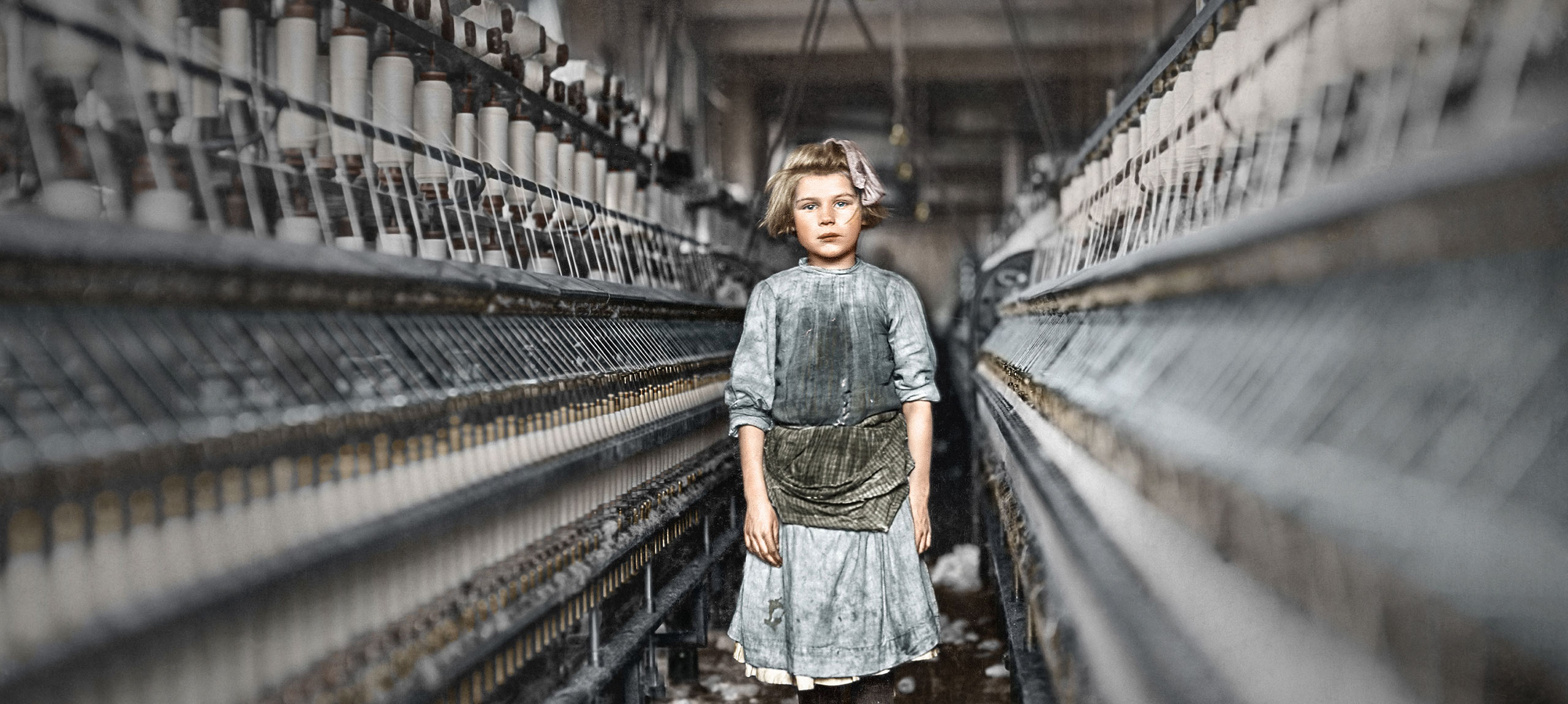







Lewis Wickes Hine
(1874-1940)
"If I could tell the story in words, I would not have to carry a camera with me."
LEWIS W.HINE
Lewis Wickes Hine (September 26, 1874 – November 3, 1940) was an American sociologist and photographer. Hine used his camera as a tool for social reform. His photographs were instrumental in changing child labor laws in the United States. Hine was born in Oshkosh, Wisconsin, on September 26, 1874. After his father was killed in an accident, Hine began working and saved his money for a college education.
He studied sociology at the University of Chicago, Columbia University and New York University. He became a teacher in New York City at the Ethical Culture School, where he encouraged his students to use photography as an educational medium.
Hine led his sociology classes to Ellis Island in New York Harbor, photographing the thousands of immigrants who arrived each day. Between 1904 and 1909, Hine took over 200 plates (photographs) and came to the realization that documentary photography could be employed as a tool for social change and reform.
Documentary photography
In 1907, Hine became the staff photographer of the Russell Sage Foundation; he photographed life in the steel-making districts and people of Pittsburgh, Pennsylvania, for the influential sociological study called The Pittsburgh Survey.
In 1908 Hine became the photographer for the National Child Labor Committee (NCLC), leaving his teaching position. Over the next decade, Hine documented child labor, with focus on the use of child labor in the Carolina Piedmont, to aid the NCLC's lobbying efforts to end the practice. In 1913, he documented child laborers among cotton mill workers with a series of Francis Galton's composite portraits.
Hine's work for the NCLC was often dangerous. As a photographer, he was frequently threatened with violence or even death by factory police and foremen. At the time, the immorality of child labor was meant to be hidden from the public. Photography was not only prohibited but also posed a serious threat to the industry. To gain entry to the mills, mines and factories, Hine was forced to assume many guises. At times he was a fire inspector, postcard vendor, bible salesman, or even an industrial photographer making a record of factory machinery.
During and after World War I, he photographed American Red Cross relief work in Europe. In the 1920s and early 1930s, Hine made a series of "work portraits," which emphasized the human contribution to modern industry. In 1930, Hine was commissioned to document the construction of the Empire State Building. He photographed the workers in precarious positions while they secured the steel framework of the structure, taking many of the same risks that the workers endured. In order to obtain the best vantage points, Hine was swung out in a specially-designed basket 1,000 ft above Fifth Avenue.
"Power house mechanic working on steam pump" (1920)
During the Great Depression Hine again worked for the Red Cross, photographing drought relief in the American South, and for the Tennessee Valley Authority (TVA), documenting life in the mountains of eastern Tennessee. He also served as chief photographer for the Works Progress Administration's National Research Project, which studied changes in industry and their effect on employment. Hine was also a faculty member of the Ethical Culture Fieldston School.
"Was die Wirtschaft durch Kinderarbeit spart, zahlt die Gesellschaft später tausendfach zurück"
© 2013 - 2023 Dominique Grosse | All rights reserved. | Impressum
Dominique Grosse
Dominique Große
Dominique Grosse
Dominique Große
Dominique Grosse
Dominique Große
Dominique Grosse
Dominique Große
Dominique Grosse
Dominique Große
dominiquegrosse.de
dominiquegrosse.de
dominiquegrosse.de
Partner




